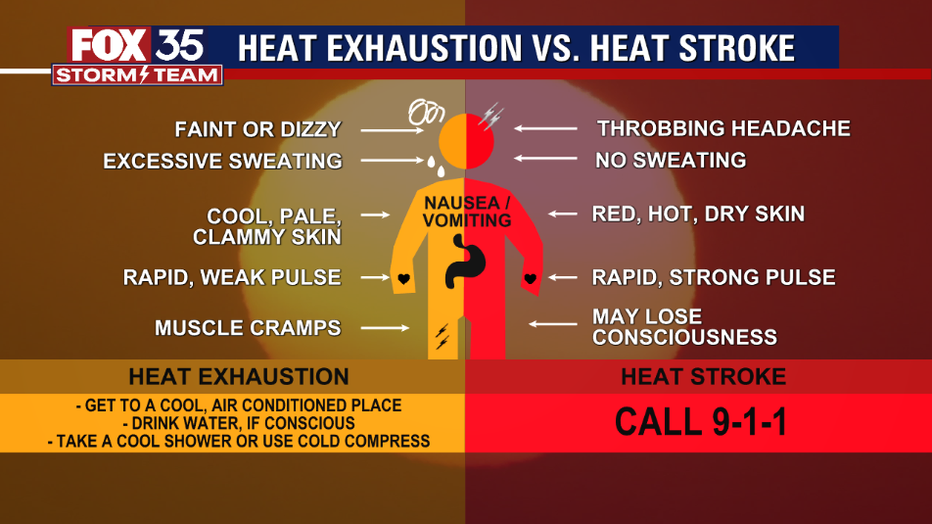Heat exhaustion or heat stroke: Here are the signs to know

Beating the heat at Red Hot and Boom!
Plenty of people will gather over the Fourth of July weekend with backyard parties, a visit to the beach, or perhaps spend a day at the theme parks to see their nightly fireworks show. All fun, but it's also July in Florida, which means summer heat.
ORLANDO, Fla. - Plenty of people will gather over the Fourth of July weekend with backyard parties, a visit to the beach, or perhaps spend a day at the theme parks to see their nightly fireworks show. All fun, but it's also July in Florida, which means summer heat.
For travelers and visitors, temperatures are expected to be in the mid-to-low 90s, though with the heat index – the combination of the outside temperature and the amount of moisture in the air – it will feel like it's in the upper 90s.
FOX 35 Storm Center: Hot and humid with a chance for storms
That kind of heat can impact the body and your health, leading to sunburn, heat exhaustion, or heat stroke.
Enjoy the fun in the sun here in Florida, but stay safe, too. Here are three tips:
- Make sure to drink water, even if you do not feel thirsty
- Limit your time out in the sun. Find shade.
- Wear lightweight and light-colored clothing, and wear sunscreen.
WHAT ARE THE DIFFERENCES BETWEEN HEAT EXHAUSTION AND HEAT STROKE?

Heat exhaustion is "the body’s response to an excessive loss of water and salt," according to the CDC. Symptoms include excessive sweating, nausea, and headaches.
Heat stroke is when the body's temperature reaches 104 degrees, and can be deadly. Signs include dizziness, strong pulse, and loss of consciousness
If you or someone around, you experience these symptoms call 911 immediately.

